I have said it before but it’s important to say it again…
DO YOU KNOW THAT DROWNING IS THE LEADING CAUSE OF NON ACCIDENTAL CHILDHOOD DEATH FOR CHILDREN 1-4 AND A CHILD CAN SINK TO THE BOTTOM OF A POOL IN 2 1/2 SECONDS?
Unfortunately the statistics are true. But drowning can be prevented. Here are some ways you can become more proactive as a parent in helping prevent your child from drowning.
Become CPR Certified
Many of us new parents take a CPR class when we are pregnant or soon after our first baby is born. But then many of us don’t renew our certification. But let me tell you, it’s a priority. Put it on your to-do list right now. Some classes can be taken online so there is no excuse. I recommend heading to the Red Cross to sign up for a refresher course! I also suggest making sure older siblings are certified as well!
Invest in a Pool Fence
MOST DROWNINGS IN KIDS 4 AND UNDER HAPPEN IN HOME SWIMMING POOLS. If you have a pool, invest in a pool fence with a lock and self latching gate to keep your children away from the pool when you may be distracted. Fences are very effective and have been proven to help prevent childhood drowning. Fences should be at least 4 feet high with a lock and a latch at least 54 inches from the ground. These come in especially handy when a small child crawls out a doggie door and no one is paying attention. Children are quick and accidents happen in a blink of an eye.
Put Alarms on Doors and in Pool
Do you have a sliding glass door that leads to the backyard or maybe another kind of door that is a straight shot to the pool? I suggest installing sliding glass door locks that go up high enough for an adult to open, but not a child. I also suggest putting locks on windows and investing in an alarm system to beeps or chimes every time a window or door is opened to the outside. This way you will be immediately alerted if your child is escaping to the outside or backyard near the pool. There are even swimming pool alarms that can detect waves on the water’s surface and sound off to attract attention when someone has fallen into the pool.
Assign a Water Guardian
When you and your child is near a body of water, make sure to assign a water guardian to keep eyes on your child. Shout it out and make eye contact with the other adult to make sure they heard you. Switch off as necessary but don’t assume someone else is paying attention or watching unless you say your code word like “water guardian” or something similar. Drownings have happened when multiple adults are within close proximity where no one was a designated water guardian. And if it’s you, make sure to not get too engaged or distracted by being on your phone, talking with another adult, or possibly having too many alcoholic drinks at a party or on vacation.
Drowning Prevention Classes
I am a big advocate for drowning prevention swim classes. In fact, my children just completed 6 weeks of survival swim classes. We decided to take lessons with So Cal Survival Swim, based in Southern California that helps families in San Diego and Riverside County. You can read all about our entire experience here.
I chose this elite survival swim program so my children could learn how to float and breathe in the water despite the depth of the pool, with the sole intention to learn how to not drown. Survival swimming specifically teaches children the ability to float and breathe while in the water. Later, down the road, I would like to enroll them in more classes that involve more swim technique, but this was the first essential step in the process. I also love that these classes are uniquely customized to each child’s age, developmental level, ability, and are modified based on their ongoing skill.
The classes are conducted in a private 90 degree pool, one student at a time. They are structured for 10 minutes a day, Monday-Thursday, for approximately 4-6 weeks, depending on the age and development of your child. When I first heard of this method, I was a little apprehensive because I am used to enrolling my children in 45 minute or hour long sessions once a week, however, children work really hard in 10 minutes and are often tired by the time they are done, and the constant exposure helps ingrain the skills they need on a more structured basis. It takes a lot of energy to learn new challenging tasks and to master something like not drowning! I also thought the daily commitment would be difficult since we always have so much on our plate, but it is definitely doable and we just made it part of our daily routine just like we do when brushing our teeth or eating dinner.
You can start survival swim classes or infant aquatics as early as six months old. Honestly the earlier the better, but there were children of all ages taking classes. Although there were plenty of babies under the age of 1, there were a lot of toddlers, preschoolers, and even some other children my daughter’s Kindergarten age taking classes. I guess what I’m saying is it’s never too late to help your children learn these essential skills to survive safely in the water. And both of my children loved the classes so much they would ask if they had class on weekends and couldn’t wait until the end of each day to go to class.
The method used in this program is a SWIM-FLOAT-SWIM sequence. This is a proven method that helps teach your child to learn how to transition from a submerged or face-down position in the water to a face-up position to float, and then repeating until they get to the edge for safety. This life saving skill takes a lot of time, patience, and practice, hence the daily lessons. But, it’s amazing what a small child can learn in just a matter of days and how they can master the ultimate skill in just a few short weeks. Sometimes it takes just one moment for a new skill to developmentally click like most milestones!
I hope you found these tips helpful!!! To see more of our classes from start to finish please head to my SWIM CLASS HIGHLIGHTS on Instagram!
Photos by Victoria Parker Photography
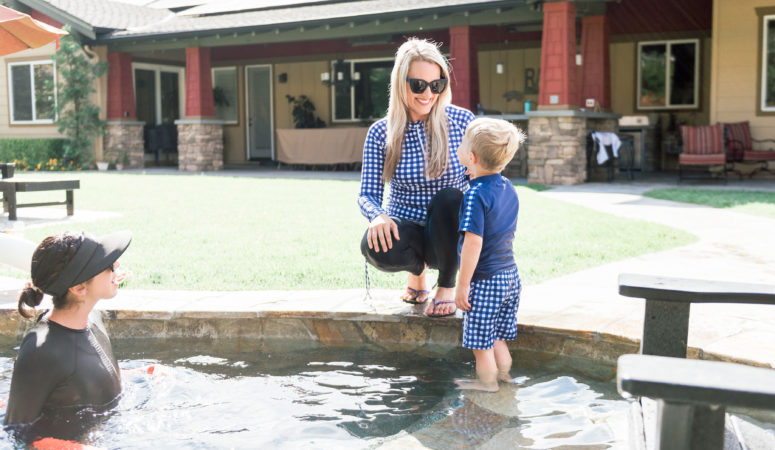
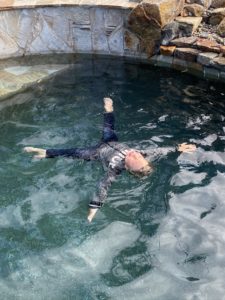
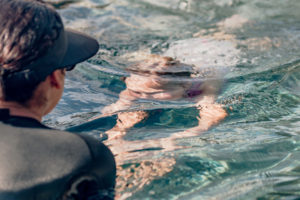
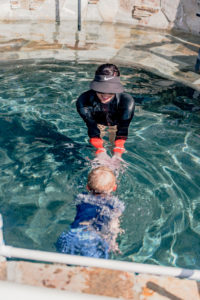
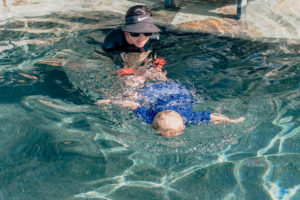
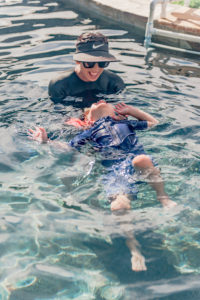
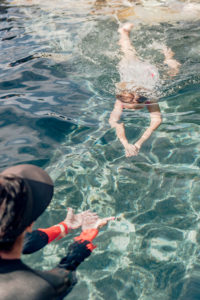

Leave a Reply